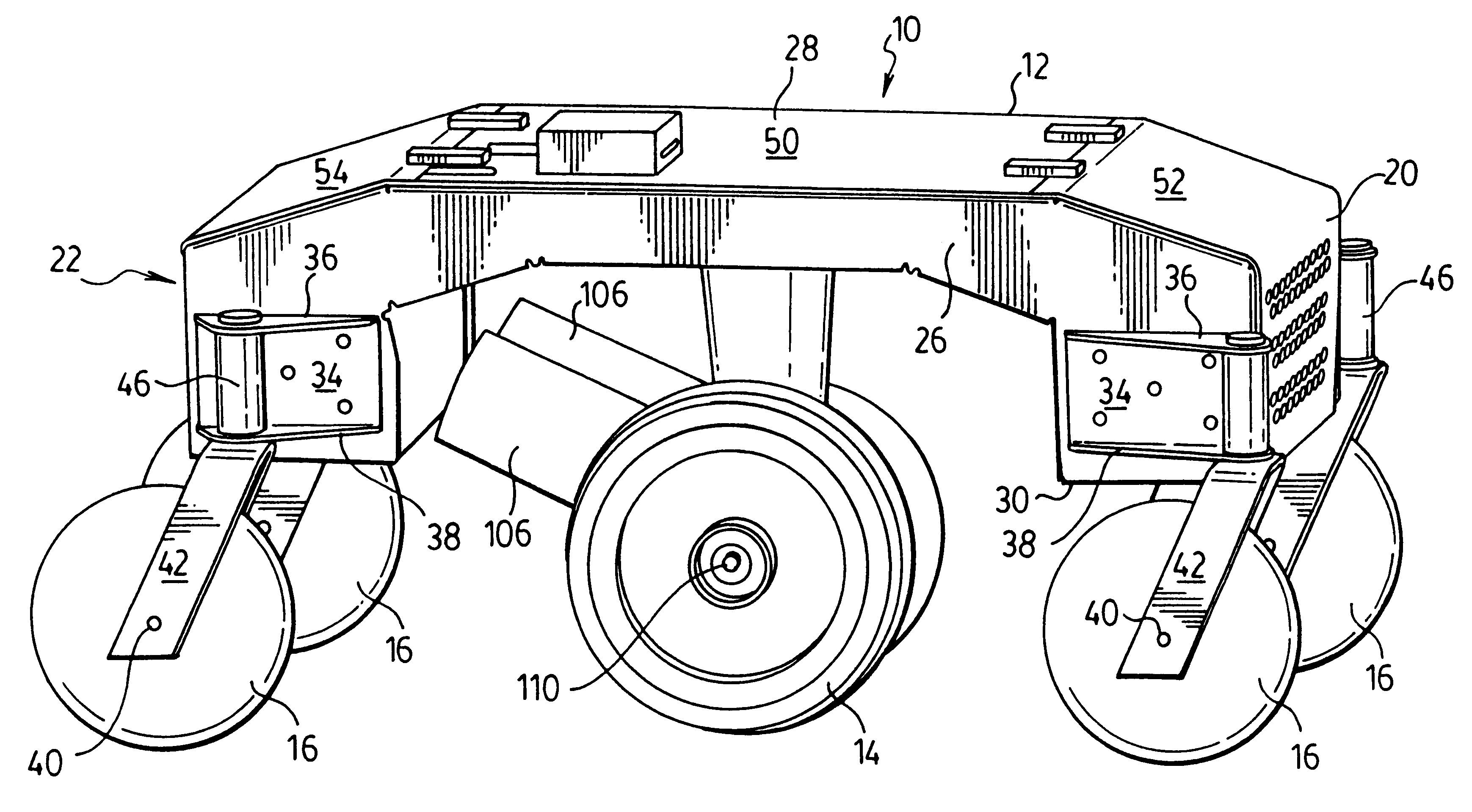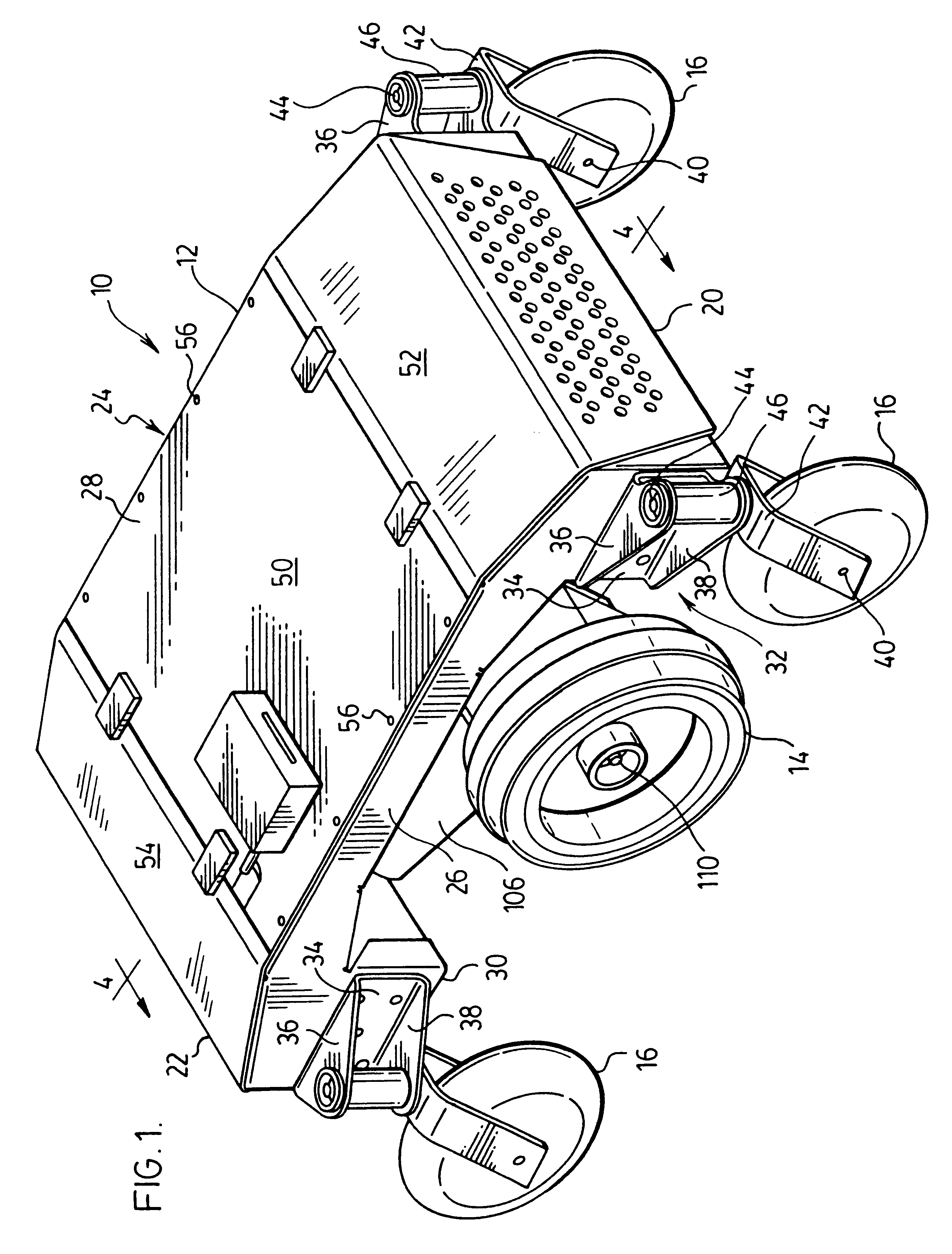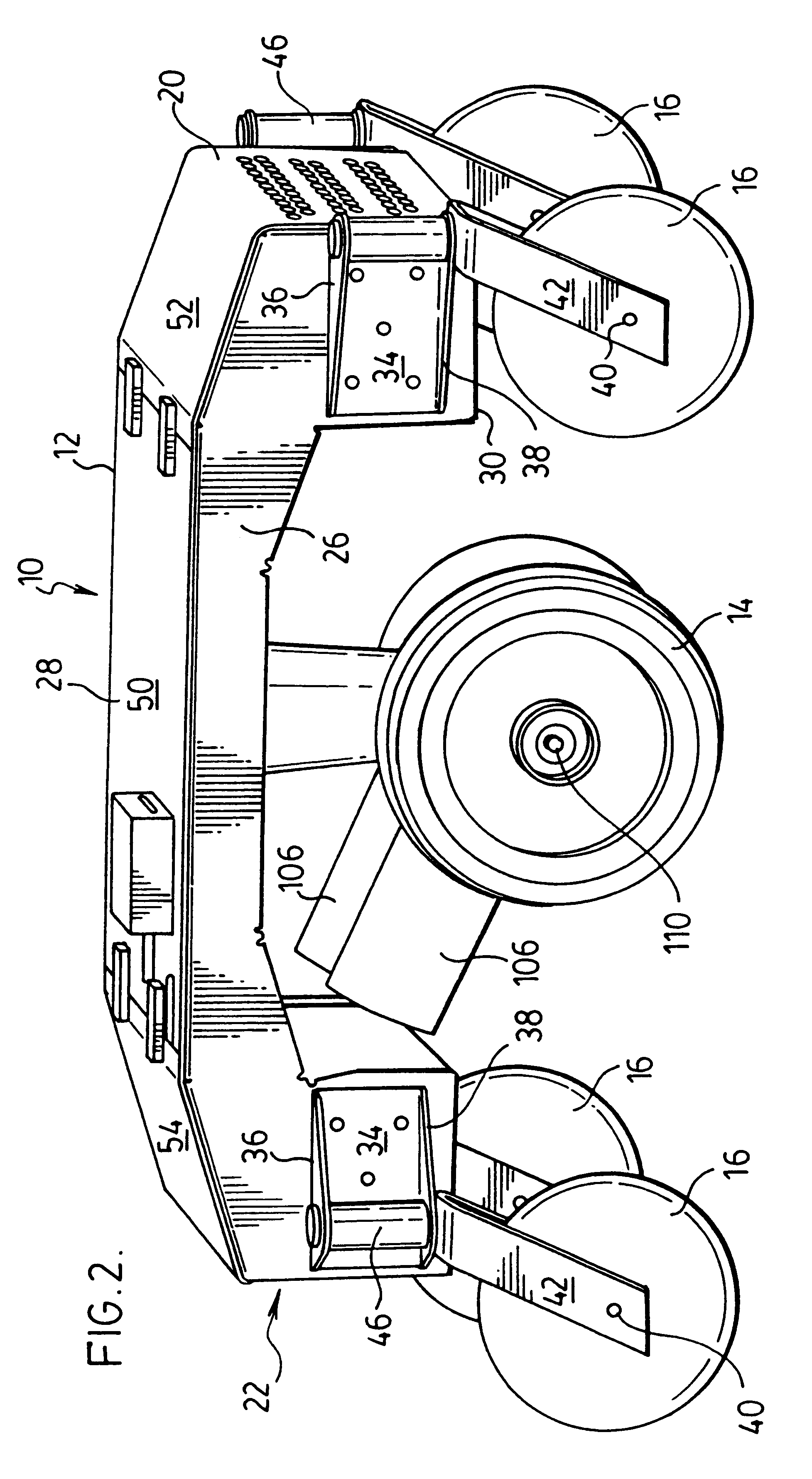Motorized chair base
- Summary
- Abstract
- Description
- Claims
- Application Information
AI Technical Summary
Benefits of technology
Problems solved by technology
Method used
Image
Examples
Embodiment Construction
As shown in FIG. 1, motorized base chair 10 comprises a chassis 12, drive wheels 14 and free running wheels 16.
Chassis 12 has a front end 20, a rear end 22, a first opposed side 24 extending between front and rear ends 20 and 22, a second opposed side 26 extending between front and rear ends 20 and 22, a top 28 and a bottom 30 (see FIG. 4).
Base 10 may be used in the manufacture of a motorized transport device, such as a wheelchair or to support a stretcher or trolley to support a load. The following description is based on the use of base 10 for a wheelchair; however, it will be appreciated that base 10 may be modified to receive thereon the superstructure of a stretcher or other transportation device. Accordingly, a seat (not shown) may be affixed to top surface 28 by any means known in the art. Preferably, the seat which is affixed to the chair is a seat for a wheelchair so that, when assembled, the unit comprises a wheelchair. Motorized chair base 10 is particularly adapted for u...
PUM
 Login to View More
Login to View More Abstract
Description
Claims
Application Information
 Login to View More
Login to View More - R&D
- Intellectual Property
- Life Sciences
- Materials
- Tech Scout
- Unparalleled Data Quality
- Higher Quality Content
- 60% Fewer Hallucinations
Browse by: Latest US Patents, China's latest patents, Technical Efficacy Thesaurus, Application Domain, Technology Topic, Popular Technical Reports.
© 2025 PatSnap. All rights reserved.Legal|Privacy policy|Modern Slavery Act Transparency Statement|Sitemap|About US| Contact US: help@patsnap.com



